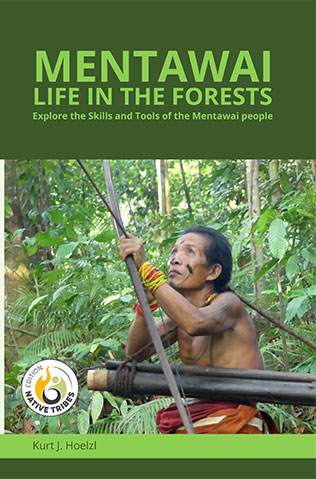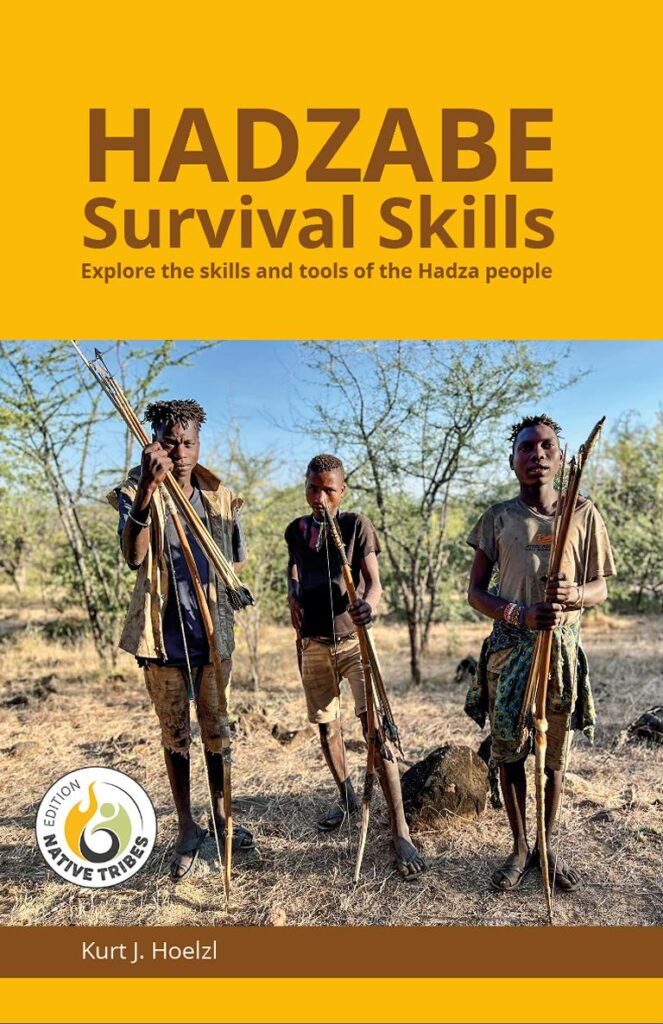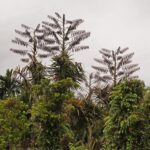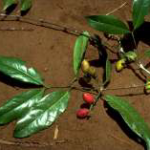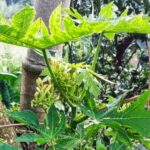Besides honey, meat, Baobab fruits, and tubers, berries are one of the significant food classes that the Hadzabe people eat. Honey is the most important one for both Hadzabe males and females. However, females relish berries as the second most essential food source. On the other hand, berries are not as important to Hadzabe males, which only rank in fourth place out of five.
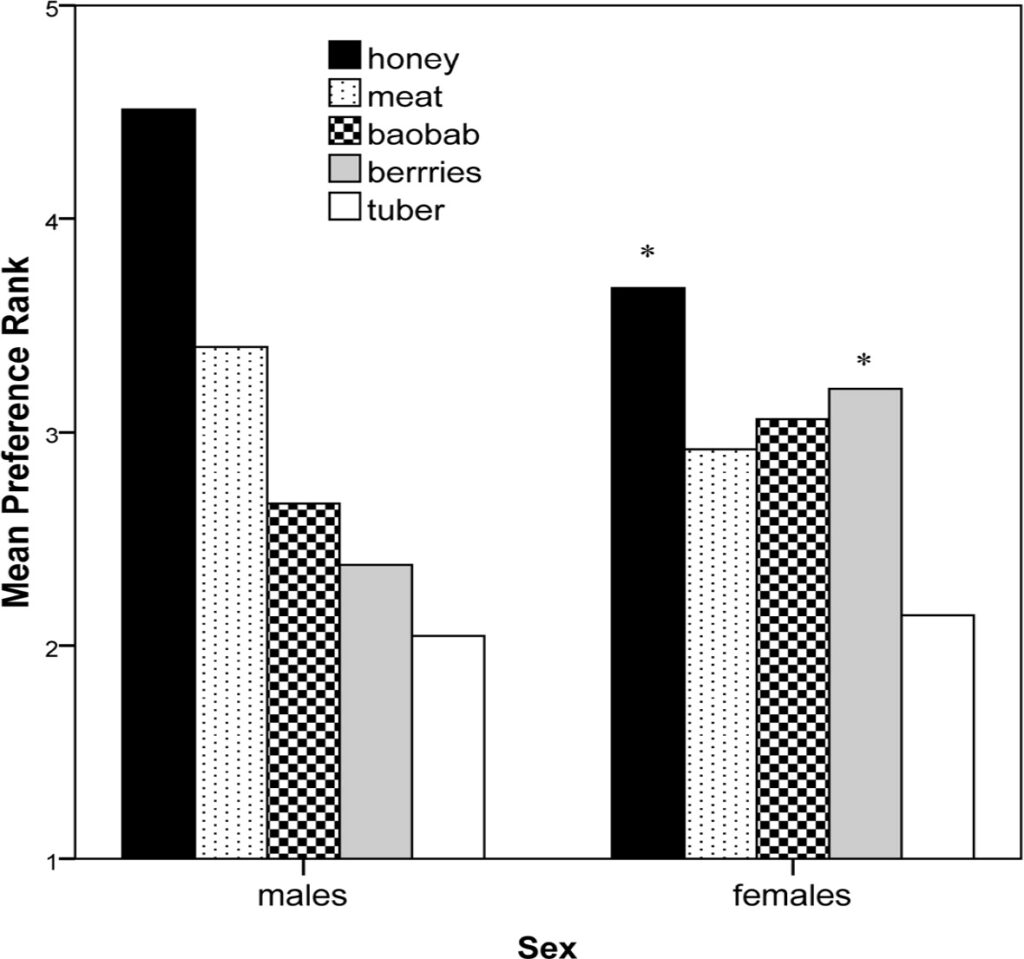
The Hadzabe people eat the following fruits: raisin bush berries, saucer (Cordia) berries, mustard tree berries, other berries, figs, and fan palm fruits. We will describe these fruits in more detail below.
Raisin bush berries
Various raisin bush species occur in the Hadzabe people’s area. The two most common ones are Grewia forbesii, called ‘Embiribi’ in Hadzane, and Grewia bicolor, called ‘Kongorobi.’
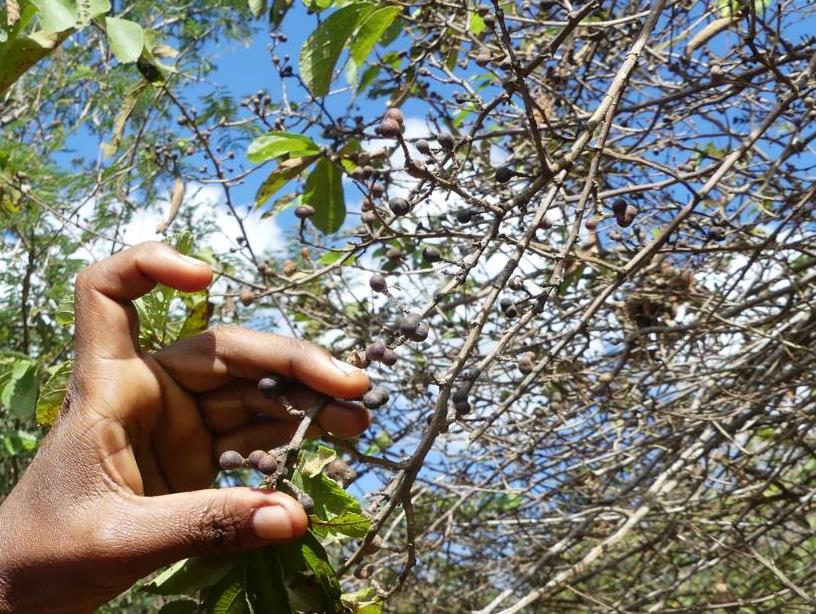
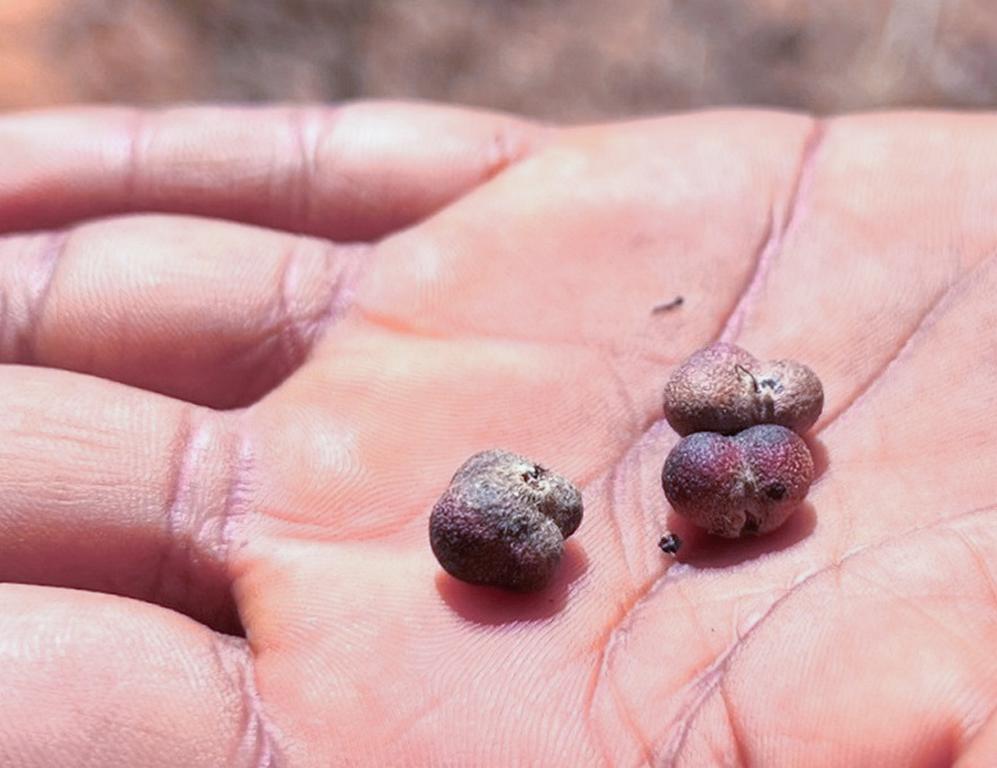
Embelebii (Grewia favescens) is similar to G. forbesii but prefers still drier, semi-arid areas. The Hadzane name for G. favescens is also ‘Embiribi / Embelebii’. This different transcription from Hadzane to English of the two species with the same Hadzane name was kept to show their similarity.
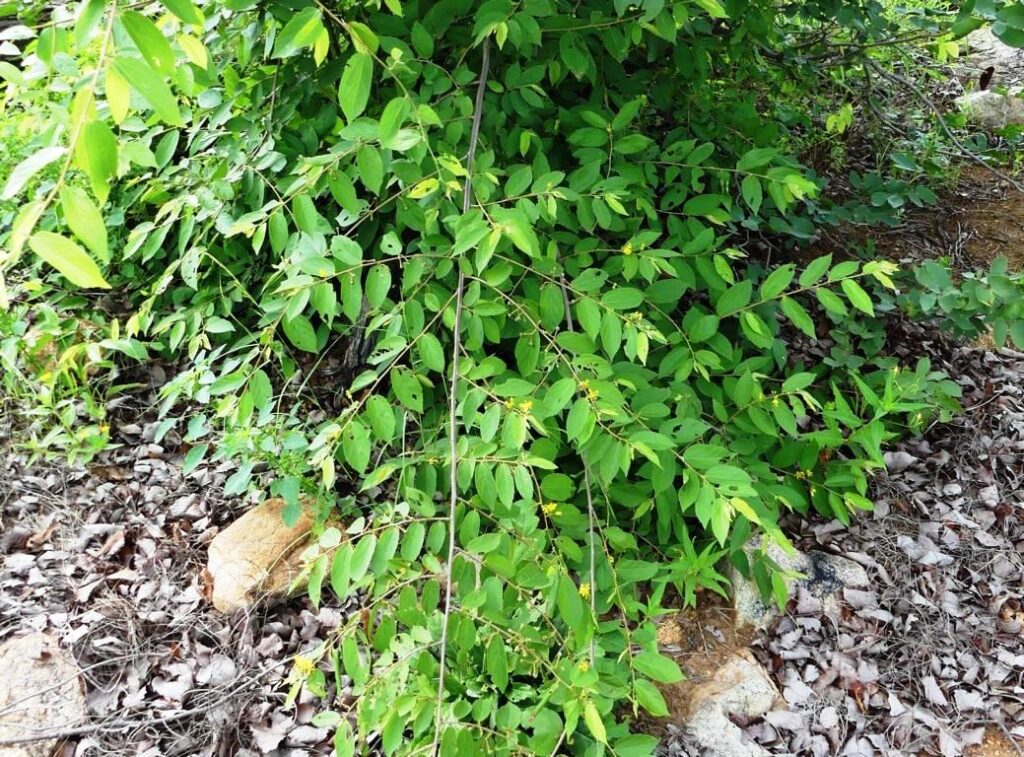
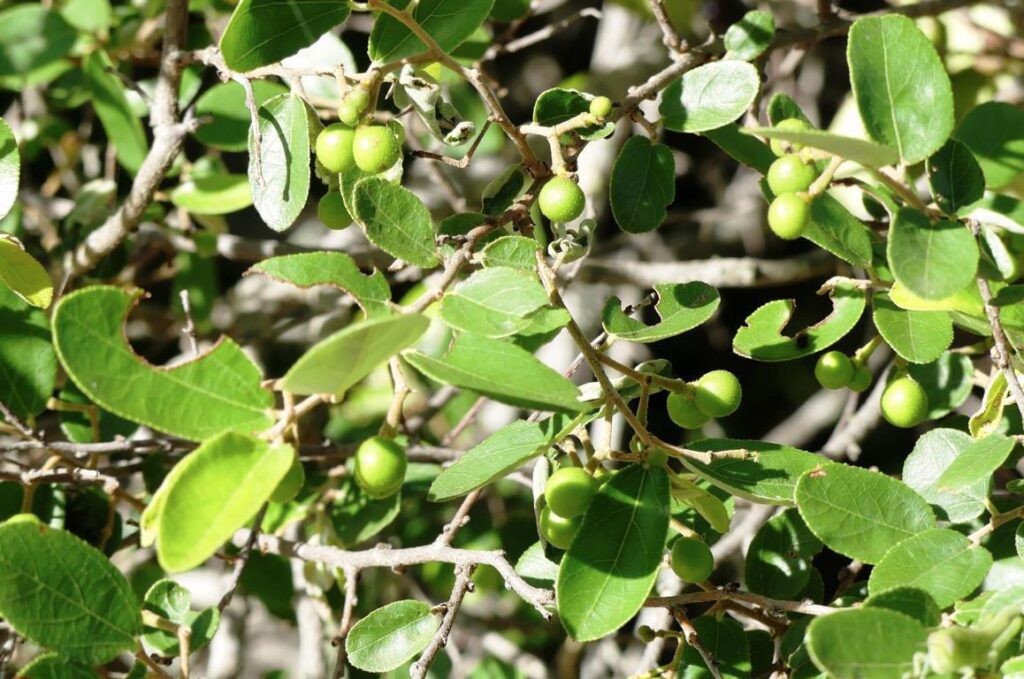
Lesser important Raisin bush species are:
- ‘Hlukwayebe’ (Grewia villosa), which the Hadzabe themselves split into three different varieties,
- ‘Nguilabe’ (Grewia ectosicarpa),
- ‘Tl’atanabe’ (Grewia pachycalyx), and
- ‘Ngwilabee’ (Grewia similis)
These berries will be harvested from the late dry season to the end of the rainy season, from October to March of the following year. However, the harvesting times will change with the weather conditions each year and the Grewia species. For example, G. forbesii will be available in October, whereas G. bicolor will only be ripe about one month later.
Nutritional value of raisin bush berries

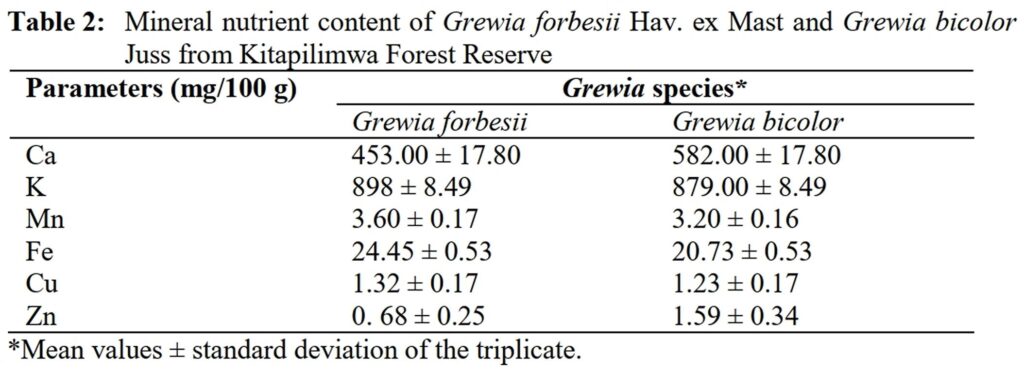
Both most common Grewia species show a very low moisture content, and about 1/3 of their contents are crude fibers. However, the carbohydrate content is very high, which means these berries have a high energy density. Additionally, Ca, K, and Fe mineral nutrients are high. Zn is very low, meaning this mineral must be added from other food sources. All anti-nutritional values were below safe threshold levels.
Saucer berries

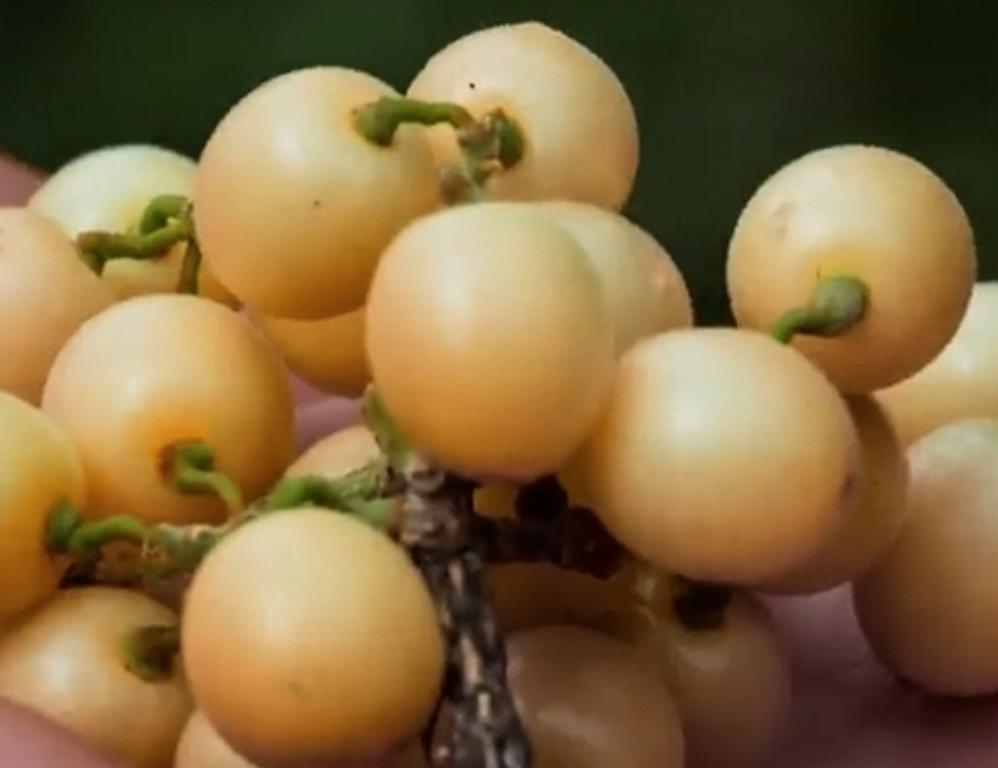
These are essential fruits for the Hadzabe, as they grow in dense stands and carry many berries. There are two species of Cordias in the area: grey-leaved saucer berries (Cordia sinensis) and Cordia crenata, which do not have a common English name. According to Peterson et al. (2013), the Hadzabe call Cordia sinensis ‘Undushibi’ and Cordia crenata ‘Musakabi’. Both species are in season and can be harvested between October and March of each year.
The bright orange or yellow colored berries are usually consumed directly, and their sweet and sticky pulp is used as a sugar substitute. Sometimes, the fruits are sun-dried and stored in wooden containers for future use. Fresh fruit pulp of sweet berries can be squeezed in water and kept for fermentation to brew local beer.
Other Cordia species eaten by Hadzabe are ‘Thakuayabe’ (Cordia villosa) and ‘Ondoshibii’ (Cordia gharaf).
Nutritional value of saucer berries
Fresh berries have a water content of 72 %, 3.9 % protein, and 18.2 % carbohydrates. The remaining parts are mostly fibers. The energy level of these berries is 100 kcal or 423 kJ per 100 g fresh weight. Besides their nutritional value, saucer berries contain many anti-microbial properties and antioxidants (Kale & Bhale, 2022).
Mustard tree berries
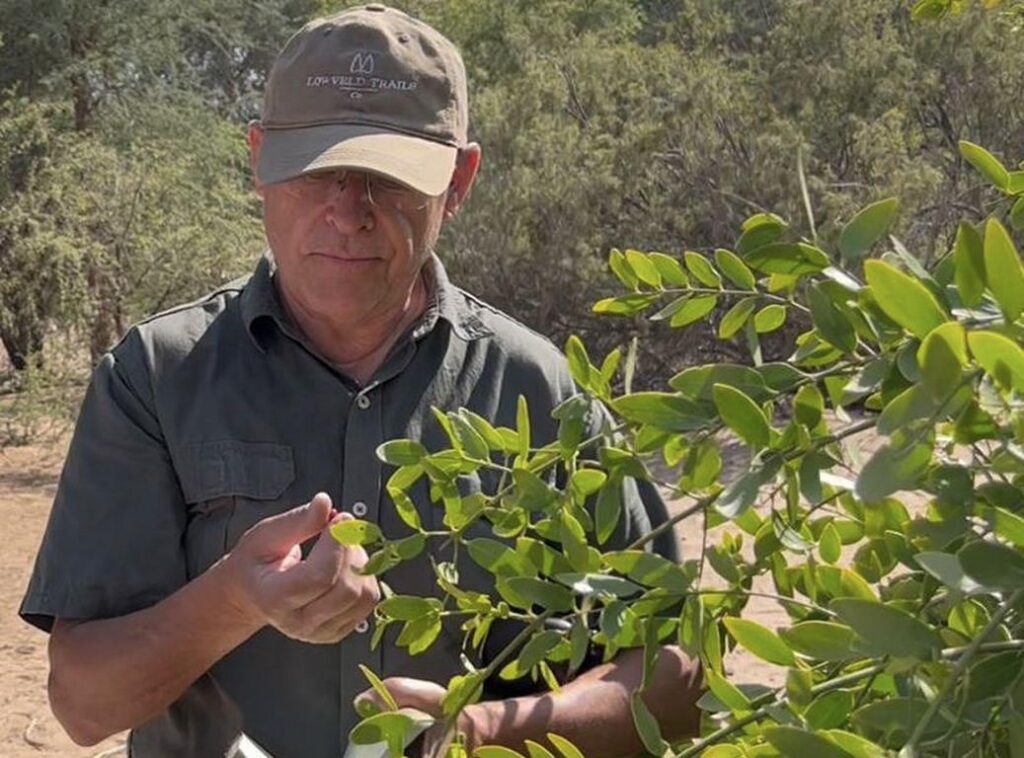

The ripe, pink to purple berries of Salvadora persica (Hadzane: ‘Tafabe’) have a sweetish, peppery, and spicy taste. They are mostly eaten raw or dried for future use. Their primary harvesting time is around January each year.
Nutritional value of mustard tree berries
Mustard tree berries have a high sugar content and deliver an energy of 141 kcal per 100 g fresh weight. The macro- and micro-mineral contents also show high values.
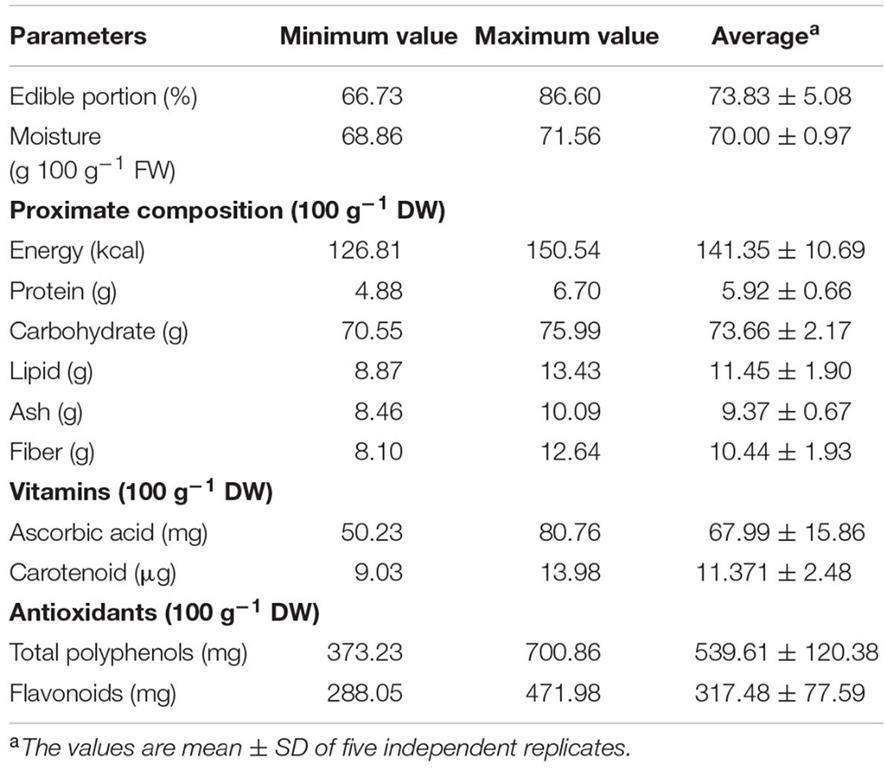
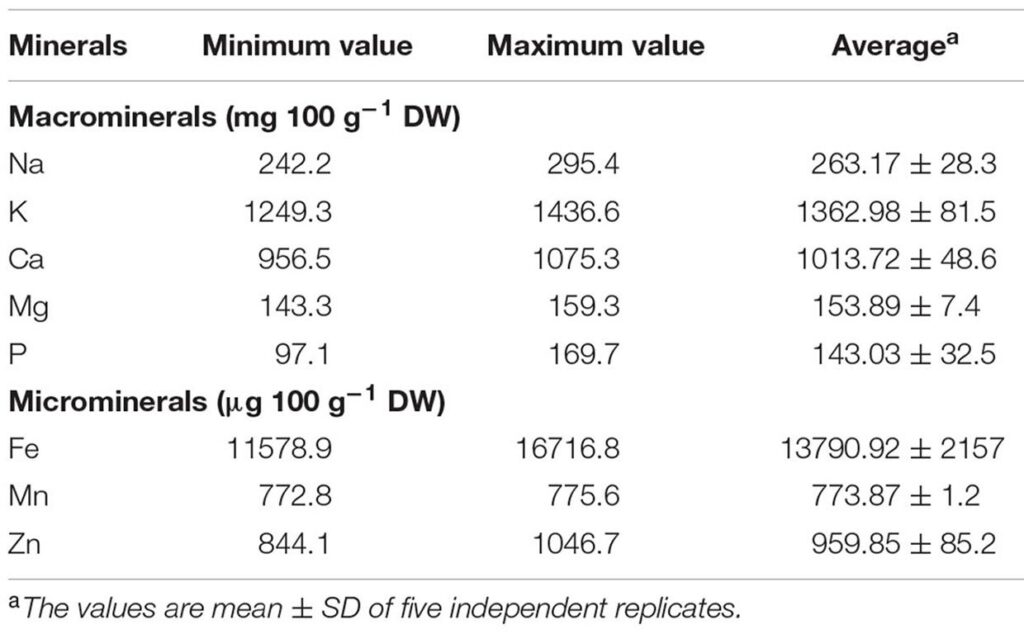
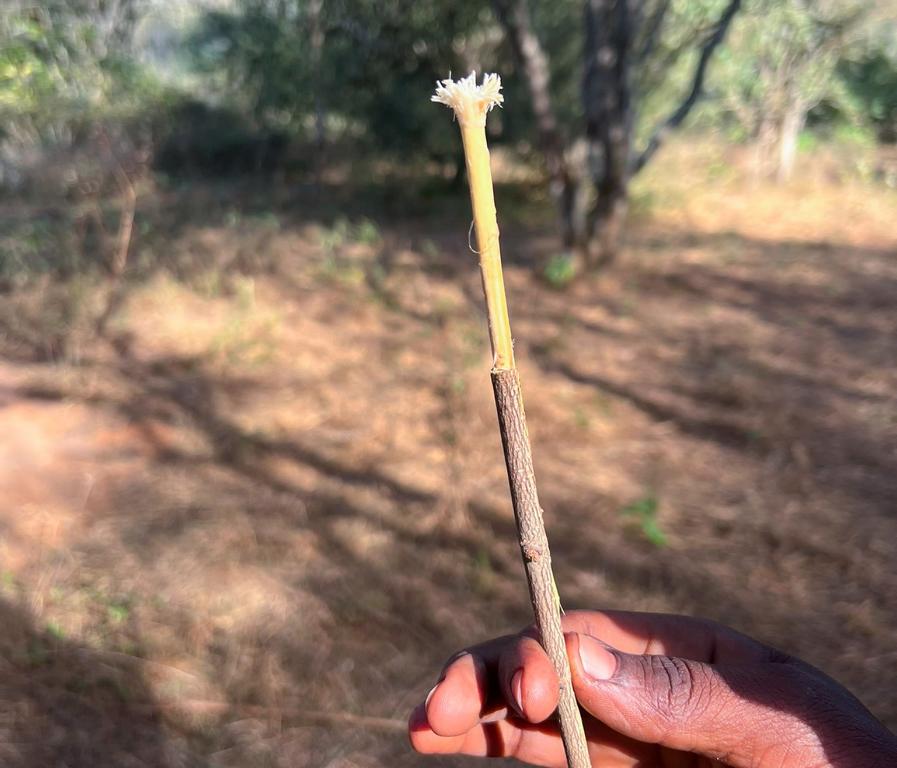
Besides of the berries, the Mustard tree twigs are used as a toothbrush replacement for oral hygiene.
Other berries eaten by Hadzabe
There is one more type of berry eaten by Hadzabe people, which they call ‘K’alahaibe’ (Opilia campestris) This information was obtained from (Safari et al., 2021) and no further information are currently available.
Wild fig fruits
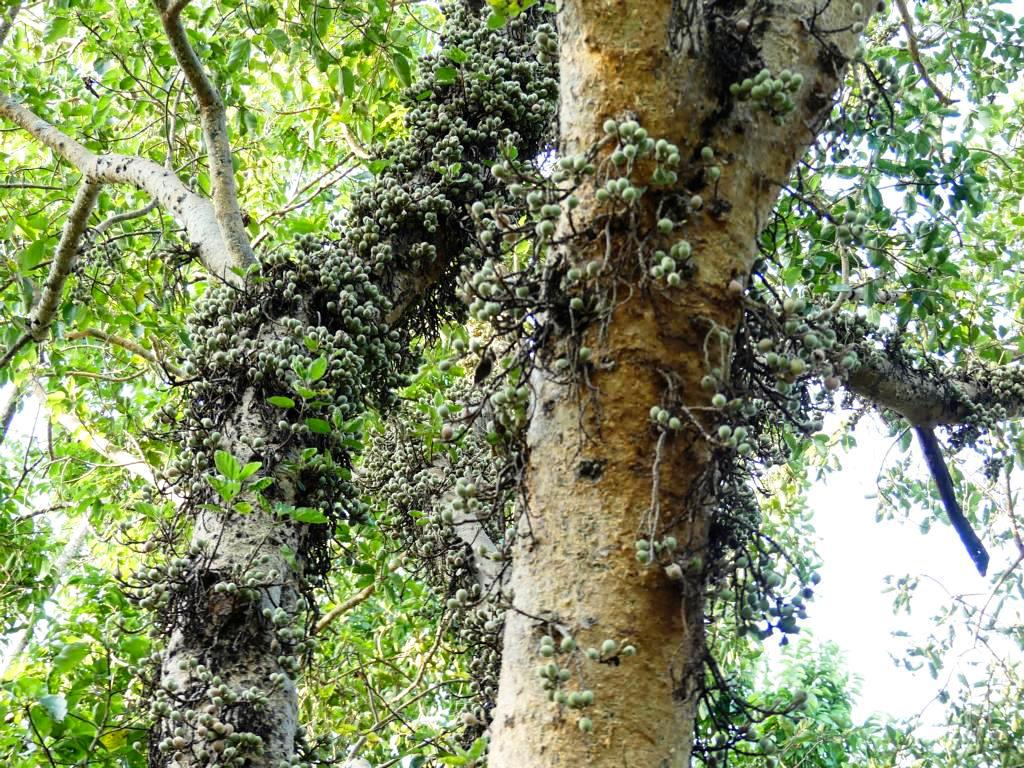
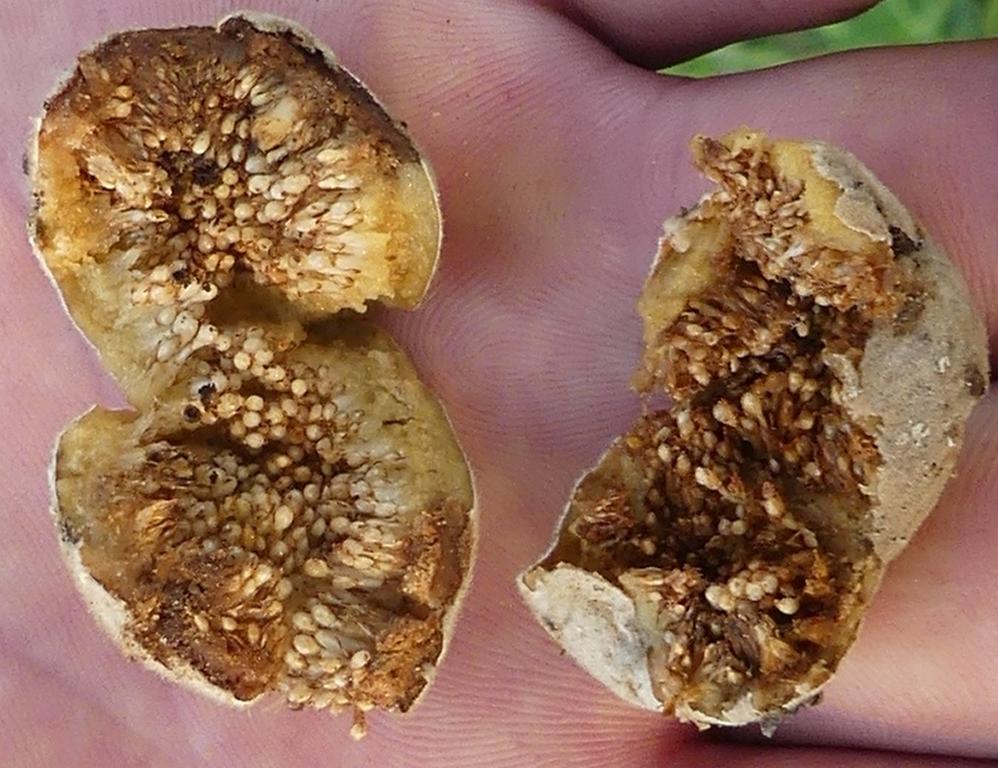
The Sycamore fig (Ficus sycomorus) is called Mulberry fig or Common cluster fig. Hadzabe people call them ‘Hogoyobe’. They mainly occur in riparian forests and on the edges of swamps. Fruiting is from July to December, but some ripe fruits can be found on the trees most of the year. Not only do people like these fruits, but they are also a favorite food for vervet monkeys. Ripe figs are, therefore, seldom available for the Hadzabe.
Nutritional value of sycamore fig fruits
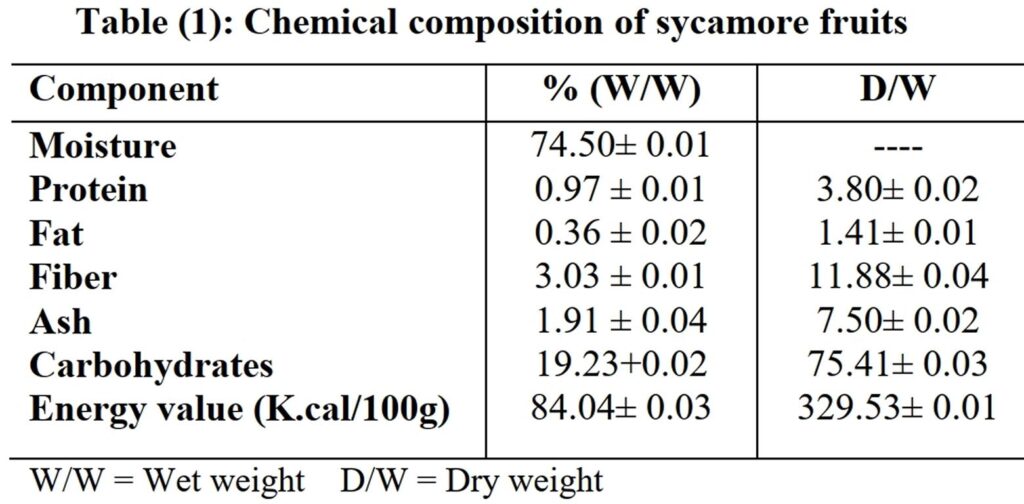
According to El-Kholie et al. (2015), sycamore figs have a high sugar content and an energy value of 84 kcal per 100 g fresh weight.
Fan palm fruits

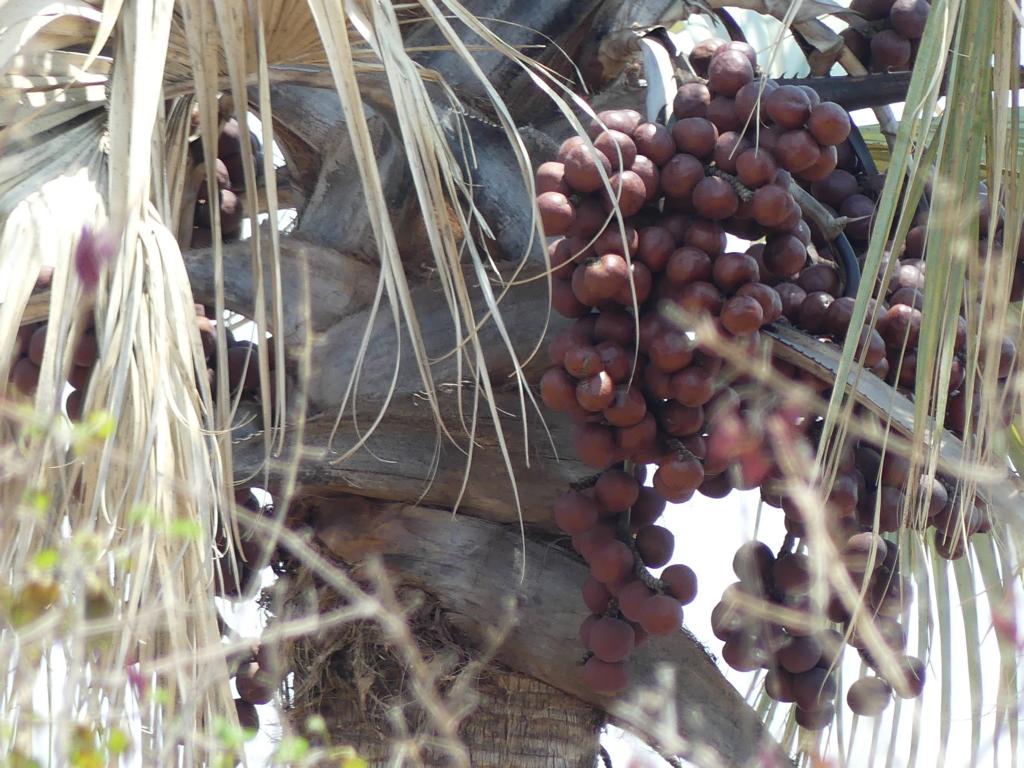
The fruit of Hyphaene petersiana (syn.: Hyphaene ventricosa), a species of fan palms, is commonly known as Buffalo palm fruit, called ‘Ts’elai’ in Hadzane. Fruits are tennis ball-sized, ripening from green through orange to glossy dark brown. The milk in the young fruit is similar to coconut milk in taste and coloring.
A thin, sweet-tasting, ginger-flavored, spongy, fibrous pulp surrounds the seed. The pulp resembles gingerbread in taste and texture. To extract the pulp, the fruit’s hard and thin outer skin is hit with a stick to open it up. This pulp is quite palatable, and not only the Hadzabe like to eat it, but elephants, baboons, and monkeys do. This way, elephants and baboons—who eat the fruits as a whole—disperse the seeds.
The fruits are produced in large quantities, up to 2000 per tree. Each takes two years to mature and up to two years thereafter to fall.
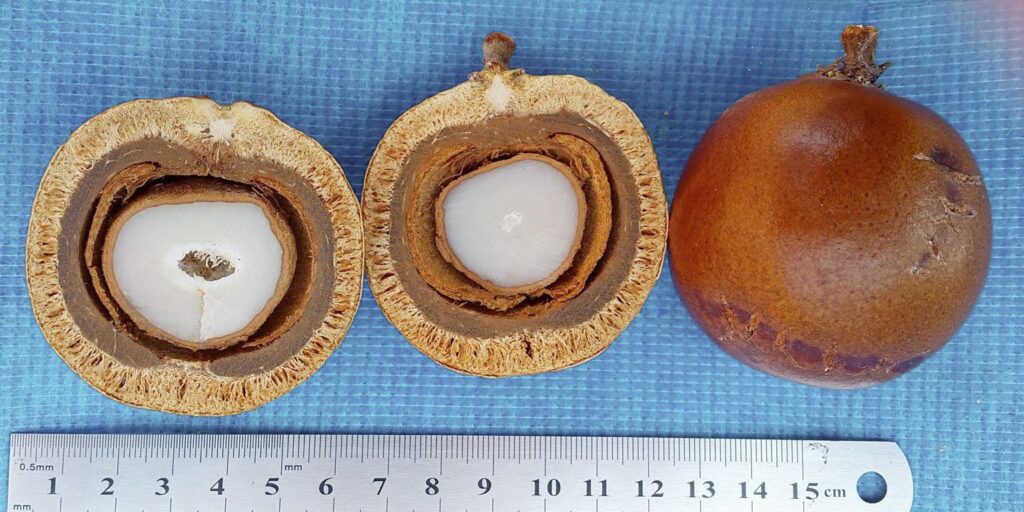
Harvesting time is throughout the year, but these palms’ locations are restricted to areas near Mang’ola in the Yaeda Valley. When collecting fan palm leaves for building shelters, these fruits are also harvested by the Hadzabe.
Nutritional value of fan palm fruits
According to this source, carbohydrates of H. petersiana fruit pulp is 5.33% of dry weight, crude protein 3.1%, and a very low crude fat content. Mineral contents, however, are high for K, Mg, Na, P, S and Zn. This fruit is therefore an important food supplement for healthy bodily functions.
Lessons learned about fruits eaten by Hadzabe people:
- Fruits are mainly berries, which the Hadzabe people eat.
- Besides berries, only Common cluster figs and Fan palm fruits are eaten occasionally.
- The most important berries as food additions are various Grewia- and Cordia species.
- Both Grewias and Cordias are essential additions to a Hadzabe healthy food intake.
- Besides the mentioned berries, Mustard tree fruits are also eaten regularly.
Additional information
My book ‘Hadzabe Survival Skills‘ offers more skills, knowledge, tools, and techniques for the Hadzabe people’s life in their natural environment. It is available on Amazon.com and Amazon’s regional websites.
.

